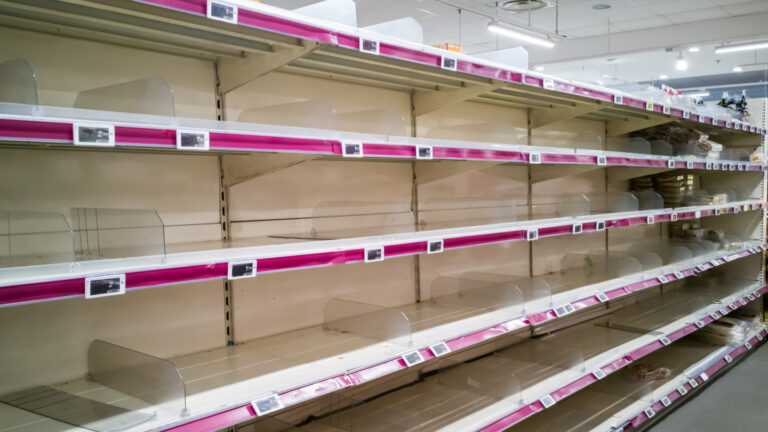
Urban warehouses are starting to gain traction around the country, as wholesalers seek to serve expanding urban populations and handle increased consumer demand for fast delivery. But while urban warehouses help fill a critical market gap, they also bring new challenges for wholesalers accustomed to operating facilities located in office parks or suburban warehouses. Here are some key risks wholesalers should consider—and some ways to mitigate them.
While urban warehouses help fill a critical market gap, they also bring new risks and challenges for wholesalers accustomed to operating facilities located in office parks or suburban warehouses.
Inventory-related exposures
When it comes to urban warehouses, having a clear idea of the type of inventory the facility is going to store—as well as its size, fragility, and other constraints—can help mitigate several property-related risks. Here are some special considerations:
- Cold goods. You’ll obviously need a dedicated refrigerated space for items that must stay cold. Confirm that your urban warehouse is retrofitted to support the extra weight, electricity, and ventilation this type of equipment requires.
- Combustibles. Flammable or combustible goods have strict storage and transport requirements (more information below), so make sure that your urban warehouse is compliant with relevant standards.
- Medicines and medical supplies. If you’re a pharmaceuticals or medical supplies wholesaler, your facility will likely need to follow certain requirements for sterile storage and handling.
Warehouse fire hazards
While fires are risks in any warehouse, urban warehouses have the added challenge of being in heavily populated areas where fires can spread more quickly. Ensure that your warehouse complies with all National Fire Protection Association (NFPA) standards, with appropriately sized exits and formal emergency evacuation procedures for employees and others, and sprinklers installed throughout your facility—particularly for inventory racks. Then schedule an appointment with your local fire department to conduct pre-planning and to familiarize firefighters with your facility layout.
Be especially cognizant about following all warnings and regulations when storing hazardous items. The products below offer examples of how various flammable items must be stored differently:
- Lithium batteries. While the small size of lithium batteries makes them efficient to store in urban warehouses, put them in an isolated area with minimal quantities present, as their fire protection standards are much stricter than regular batteries.
- Flammable liquids. Per NFPA standard, combustible or flammable liquids should be stored on lower floors in a specially constructed area. These spaces, called “cut-off rooms,” are built with fire-rated walls and have the ability to contain and drain potential spills.
- Aerosols. Flammable aerosol products should be stored in cages so that in the event of fire, containers cannot rocket out of a room and spread fire or noxious fumes to other areas.
Traffic and parking
A city’s proximity to highways and major arteries is a major benefit, especially when it comes to same-day delivery. However, managing traffic in an urban setting will require different considerations than in other warehouse locations. Here are some other traffic considerations to address:
- City ordinances. Before selecting a location, understand any hours of business operation limitations that could affect traffic flow or parking and obtain necessary permits.
- Delivery truck flow. Your warehouse will need the space and layout to accommodate two different flows of truck traffic: in and out. Choose a facility with enough space to handle this need (even if it’s on two different streets).
- Fleet size. Given that urban warehouses are often smaller than other facilities, you may need to retrofit the space with ramps or elevators to manage inventory loads. Confirm you have the right size commercial vehicles to navigate the space.
- Uptick in claims. With all of the changes listed above, and with the additional hazards of navigating city traffic patterns, crowded sidewalks and crosswalks, and other distractions, comes the increased risk of commercial auto claims. Consult with your insurance carrier to make sure that your operation has adequate coverage.
Security procedures
Similar to traffic considerations, an urban warehouse may call for different security procedures than for a facility located in a suburban or rural setting. For example, in a densely populated area, there is less physical space for fencing and other buffers that limit access, which may increase the risk of theft. Meanwhile, same-day delivery requires trucks and employees to come and go more frequently, making it harder to secure entrance and exits.
In a densely populated area, there is less physical space for fencing and other buffers, which can increase the risk of theft.
To protect your property and personnel in an urban environment, consider the following security precautions:
- Security guards. Hire professional security personnel for busy or late-night hours, and conduct background checks and verify proper licensure and certification. If working with a third-party firm, put contracts in place that clearly outline responsibilities and verify the other company includes your operation as an additional insured on its general liability policy.
- Access controls. Install standard access controls for all entries and exits, consider restricting access for specific groups during certain times, and log all visitors.
- Emergency plan. To help protect personnel, clearly mark evacuation routes, establish safe areas for refuge, and follow other emergency response planning standards as required by your local jurisdiction. For urban warehouses, being in a narrower, multi-floor facility can add complexity to these tasks.
- Outside storage. Your urban warehouse probably has less space around the building and more eyes watching from the street. Consider reducing or eliminating outside storage space to reduce risk of theft. Only use outdoor storage for lower value products, check that inventory is not visible, and lock units when not in use. .
- Lighting and security equipment. At a minimum, install video cameras, an alarm system, and high-intensity lighting in the parking lot and at all entries and exits. Regularly check equipment to verify it is working. Consult with a security specialist or local law enforcement to discuss system needs and available technology.
- Signs. Add relevant security signage as a final deterrence against crime. For example, signs can warn would-be thieves against trespassing, alert to the presence of video surveillance, and explain that criminals will be prosecuted.
- Law enforcement. Establish a relationship with local law enforcement. Ensure they are familiar with your business and can respond if something appears out of the ordinary.
Facility and equipment safety
Urban warehouses are often narrower and taller than facilities in regions and locations that afford more space. For that reason, you’ll likely need to invest in new equipment and make updates to training, safety procedures, and insurance coverage.
- Internal transport. To access inventory several stacks up or to transport goods from floor to floor, your multi-story warehouse may use elevators, conveyor systems, or even robots or drones. Consider what training, safety, and insurance changes you will need to make to accommodate this new equipment.
- Equipment breakdown and business continuity. The more mechanized your operation, the greater the chance of business interruption due to a power outage or equipment damage. Consider what contingency plans you will need to access and move inventory if your facility loses power or you need to repair or replace equipment.
- Storm and water damage. The risk of water damage increases in a multi-story building, as leaks flow vertically down, potentially ruining inventory on more than one floor while also wreaking expensive structural damage.
Working together to protect your warehouse
Urban warehouses offer an exciting range of business opportunities for wholesalers—but they also come with risk. Your insurance provider is a valuable resource that can help you assess this risk, create strategies, and advise on the coverage you need to better protect your business in a new urban environment.
Want to learn more about the industry trend toward urban warehouses? Find out more in our article, Urban warehouses: solving the last-mile delivery challenge.
Related insights
This website is general in nature, and is provided as a courtesy to you. Information is accurate to the best of Liberty Mutual’s knowledge, but companies and individuals should not rely on it to prevent and mitigate all risks as an explanation of coverage or benefits under an insurance policy. Consult your professional advisor regarding your particular facts and circumstance. By citing external authorities or linking to other websites, Liberty Mutual is not endorsing them.



